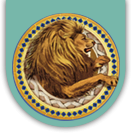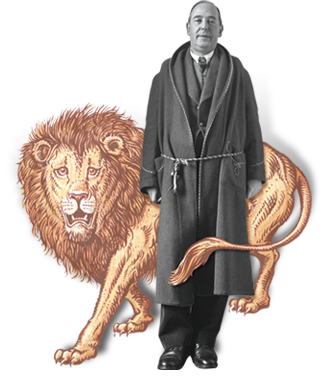A Picture-Perfect Look at the Inklings’ Oxford
If you can’t make it to Oxford any time soon, perhaps the next best thing would be to get yourself a copy of The Inklings of Oxford, with text by Harry Lee Poe and photographs by James Ray Veneman (Zondervan, 2009). And if you are going to Oxford, you might want to take this book along, a helpful guide to all the Inklings sites in and around Oxford, including clearly-mapped walking tours.
The photographs in this book are a banquet for the eyes. Nearly all in color, the pictures capture not only familiar images of famous Oxford edifices and much-loved pubs. They also provide artful close-ups of cobbled streets, ornamental woodcarvings, and joyous wildflowers in and around the city of dreaming spires.
One might have wished for a few more archival photos, as there are surprisingly few pictures of C. S. Lewis, J.R. R. Tolkien and their friends. One gets a better sense of the world surrounding the Inklings than of the Inklings themselves. (Readers interested in seeing more pictures of the Inklings, and their families, may consult Walter Hooper’s Through Joy and Beyond, Douglas Gilbert & Clyde S. Kilby’s C. S. Lewis: Images of his World, and Humphrey Carpenter’s two classic biographical works, The Inklings and Tolkien: A Biography.)
I don’t envy Harry Lee Poe his job of trying to provide text to accompany these sumptuous photographs. But Poe does an admirable job of weaving together many lives and stories into a flowing narrative. Occasionally, Poe’s flights of lyrical prose carry him off into lofty truisms. (“What makes a person special is not so much the person, but the people who think they are special: their friends.”) But most of the time Poe offers a succinct, perceptive look at the Inklings, from their formative years, to their emerging network of friendships, to their lasting literary legacy. Newcomers to Inklings studies–after being dazzled by all those gallery-worthy photographs–will find here an excellent introduction to the Inklings as a group and as individuals. (If neophytes want to pursue their studies, they may continue with the Carpenter books mentioned above, as well as Colin Duriez’s dual biography, Tolkien and Lewis: The Gift of Friendship and Diana Pavlac Glyer’s thoughtful recent study, The Company They Keep: C. S. Lewis and J. R. R. Tolkien as Writers in Community.)
Even seasoned students of the Inklings will find a good many fresh perspectives and insights in this book. Poe goes well beyond merely supplying captions for the pictures. He reminds you of all the great minds who shaped, and were shaped by, this fabled city, and he doesn’t neglect to mention some of the curiosities and oddities that also make Oxford what it is today. Poe is also particularly helpful in showing the many shared values in Lewis’s and Tolkien’s fiction, and in contrasting Tolkien’s Ring with Wagner’s, two fantasy epics whose underlying worldviews are nearly opposite.
What review would be complete without a quibble or two? It can’t be said that Lewis was born in “Northern Ireland,” as that nation did not exist yet in 1898. And a quick query to the Wade Center at Wheaton could have identified the “unidentified friend” pictured on page 62 as an American, Nathan Comfort Starr. What’s more, I don’t find the speculation at all convincing that Bilbo and Frodo are partially modeled on the Lewis brothers. (Recall all those stern warnings from both Lewis and Tolkien about Source Critics and their overly ingenious theories!) I had to chuckle at the phrase that “Tolkien’s hobbits are bachelors who liked to eat, drink, and smoke weed.” The hobbits called their tobacco pipeweed, but I think a few of Tolkien’s readers from the ‘60s might call to mind another kind of weed.
Some readers may feel that this book is too much an idealized “picture postcard” view of the Inklings’ lives. These were men, not gods, and they had their full share of financial worries, domestic troubles, and tensions among themselves. (Tolkien, for example, once called Charles Williams a “witch doctor,” and he dismissed one of Lewis’s later books (Studies in Words) as “ponderous silliness.”)
All in all, though, this book will make a welcome addition either to your coffee table or to your bookshelf. The text offers a well-researched, fair-minded overview of the Inklings and their legacy. And the photographs make me want to jump on an airplane and head for Oxford—even though I just returned from there two weeks ago!
———————————
David C. Downing is the R. W. Schlosser Professor of English at Elizabethtown College in Lancaster County, Pennsylvania. He has written numerous articles and reviews on C. S. Lewis, as well as four books: Planets in Peril (University of Massachusetts Press, 1992), a critical study of the Ransom trilogy; The Most Reluctant Convert (InterVarsity, 2002), an examination of Lewis’s journey to faith; Into the Wardrobe (Jossey-Bass, 2005), an in-depth overview of the Narnia Chronicles; Into the Region of Awe (InterVarsity, 2005), a study of how Lewis’s wide reading in Christian mysticism enhanced his own faith and enriched his imaginative writings.
Downing serves as a consulting editor on Lewis for Christian Scholars Review, Christianity and Literature, and Seven: An Anglo-American Literary Review. His most recent book is A South Divided: Portraits of Dissent in the Confederacy (Cumberland Press, 2007). His college website may be found at http://users.etown.edu/d/downindc/)


